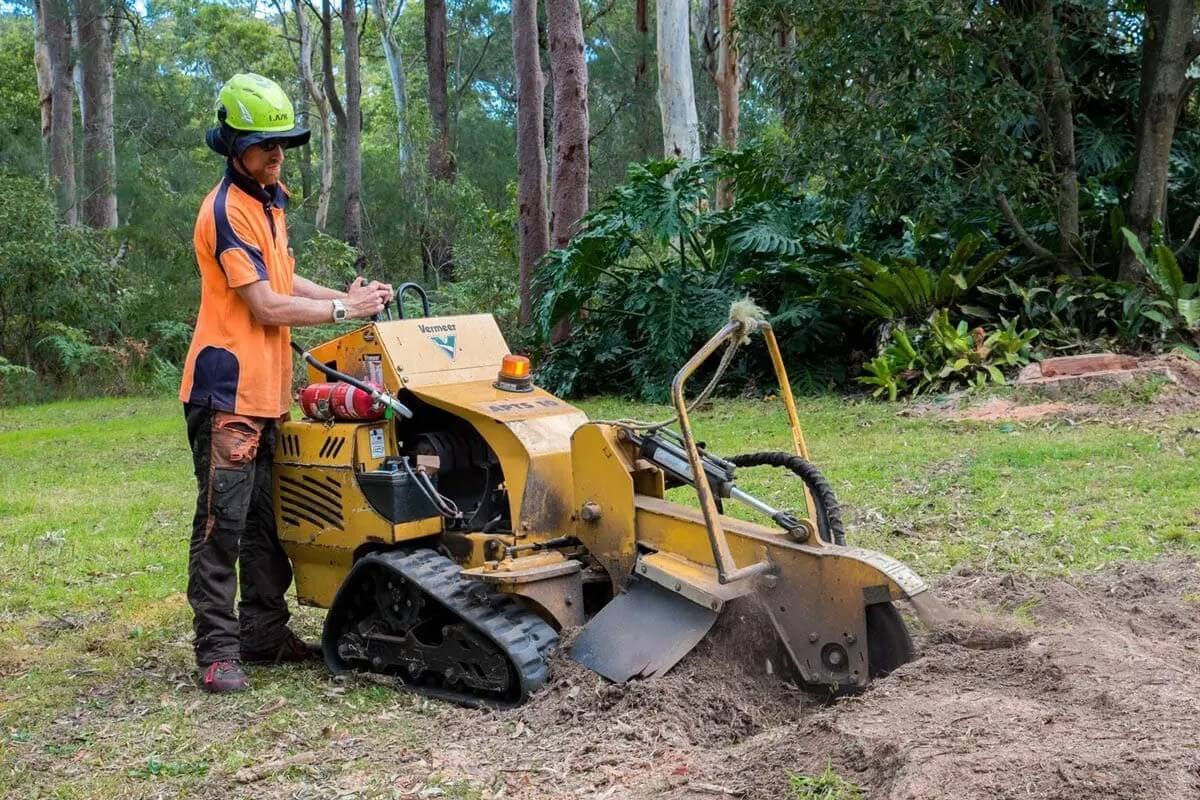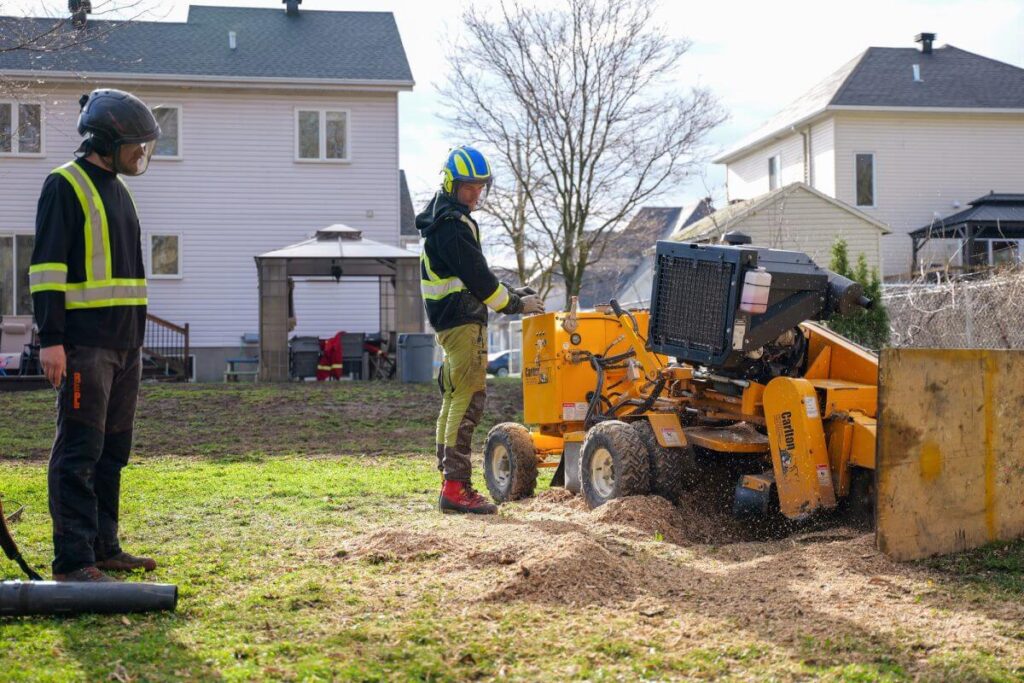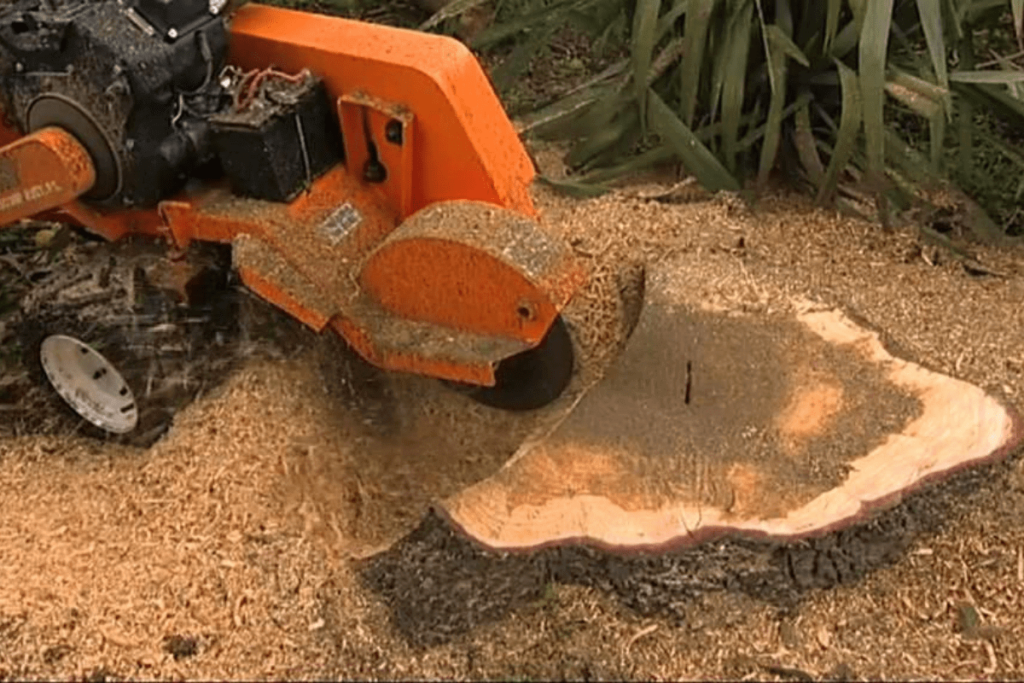Address
304 North Cardinal St.
Dorchester Center, MA 02124
Work Hours
Monday to Friday: 7AM - 7PM
Weekend: 10AM - 5PM
Address
304 North Cardinal St.
Dorchester Center, MA 02124
Work Hours
Monday to Friday: 7AM - 7PM
Weekend: 10AM - 5PM

When a tree has fallen or been cut down, you may find yourself left with an unsightly reminder in the form of a stump. Tree stumps can be more than just an eyesore; they can disrupt the functionality and aesthetics of your garden. That’s where tree stump grinding comes into play, transforming your landscape and allowing for a more pleasing outdoor space.
Tree stump grinding is a process that removes the visible parts of a tree stump, usually to a depth below the soil level. This is accomplished with the use of specialised machinery known as a tree root grinder, which efficiently chips away at the wood and grinds it down to mulch. This mulch can then be repurposed in your garden, adding organic matter back into the soil.
The process typically involves assessing the area around the stump, taking care to avoid any underground utilities or nearby structures. Once the stump grinder is positioned, it works by rotating a heavy, toothed wheel that chews through the wood. Large chunks are ground into small pieces, making it much easier to manage and remove.
While it may be tempting for homeowners to tackle stump grinding as a DIY project, hiring a professional can ensure the job is done safely and effectively. Professionals have the experience and the right equipment to handle different sizes and types of stumps.
Moreover, they understand the potential hazards involved, such as the root systems of the tree and how they may affect nearby plants or structures. If the stump is located close to a fence or a building, a professional is better suited to perform the task without causing damage.

On the other hand, some homeowners may consider a DIY approach to stump grinding. There are benefits to this option, such as saving on labour costs and gaining a sense of accomplishment after completing a task. Additionally, there are rental stump grinders available, which can make it more accessible.
However, DIY grinding does come with risks. Without the proper training, you may find yourself facing safety issues, not to mention the considerable effort required to operate heavy machinery. There’s also the risk of improperly addressed root systems, which could lead to unexpected regrowth or damage to neighbouring plants.
Tree stumps can severely disrupt the visual appeal of your garden. They can make it challenging to maintain a cohesive design and detract from the overall beauty of your outdoor space. Unattractive stumps can be particularly jarring when they disrupt well-planned landscapes, drawing the eye away from flowers and plants that may otherwise shine.
Moreover, stumps can limit your options for garden design. If you’re looking to implement new landscaping elements or flower beds, the presence of a stump might restrict your creativity and layout choices. Thus, removing stumps not only restores aesthetics but opens up endless possibilities.
Garden design often revolves around creating visual balance and harmony, and stumps can throw off this equilibrium. Focal points, symmetry, and layout can all be compromised by the intrusive presence of a stump. For instance, if you envision a lovely circular flower bed, a stump can thwart those plans and force compromises.
Additionally, if planting new trees or shrubs, old stumps can interfere with the growth of your new choices. Roots may compete for nutrients, and nearby plants might struggle to thrive when stumps occupy prime gardening real estate.
Leftover tree stumps can be more than just aesthetic nuisances; they pose genuine hazards. For instance, they can create tripping hazards, especially in a space frequented by children or pets. Stumps can also attract pests like termites, which may then spread to healthy trees and plants in your garden.
Moreover, stumps can harbour diseases that may affect surrounding vegetation. This makes their removal not just an aesthetic choice but a necessary step in maintaining a healthy garden ecosystem.

Tree stump grinding brings several advantages to your garden beyond just visual appeal. One of the most immediate benefits is the enhanced aesthetic value of your outdoor space. With stumps removed, your garden can breathe anew and allow your selected plants and flowers to take centre stage.
Furthermore, removing stumps creates an opportunity for new planting. Whether you wish to grow new shrubs, trees, or a vibrant flower bed, the absence of a stump allows for flexibility in your landscape design.
Imagine stepping into a garden with expansive open space, lush greenery, and stunning floral arrangements without any obstructions. By grinding down tree stumps, you instantly elevate the visual storyline of your yard. Your efforts in landscaping and planting will be highlighted, resulting in a more harmonious outdoor environment.
Additionally, the mulch produced from grinding can be repurposed throughout your garden. It can serve as an effective ground cover, enriching your soil while also aiding in moisture retention. This way, you have an eco-friendly solution that contributes positively to your garden.
The removal of tree stumps not only clears up space but also encourages healthy biodiversity in your garden. With the stumps eliminated, you can plant a variety of new flora that can thrive without competition from old roots.
Consider growing perennials that will flower season after season or introduce ornamental shrubs for added texture and colour. The possibilities are endless when you have a blank canvas to work with, allowing your personality and creativity to shine through in your landscape design.
Once you’ve successfully had a stump ground down, it’s essential to focus on restoring your yard. This phase is crucial in ensuring that your garden flourishes post-removal.
Begin by addressing the soil quality. The grinding process will leave behind mulch and wood chips that you can either remove or incorporate into the soil. Consider using a rake to evenly distribute remaining mulch and add fresh topsoil for better nutrient absorption.
Soil preparation is a key step in yard restoration. After grinding, you may find that some areas are uneven. Use a compactor or flat board to flatten any raised spots. Next, test the soil pH and nutrient levels; this information can guide you in enriching the soil. Adding compost will provide essential nutrients to support your new plantings.
Lastly, consider laying a new lawn or flower bed. Selecting the right plants will ensure a vibrant and diverse landscape that not only looks beautiful but also thrives in its new environment.
After you have prepared the soil, it’s time to pick the right plants. Opt for native species that are already adapted to your region’s climate and soil conditions. These plants often require less maintenance and will support local wildlife.
Incorporate a mix of perennials and annuals to ensure colour throughout the seasons. Don’t shy away from creating layers in your plant selection; taller plants at the back and shorter ones in front can provide depth and interest to your garden design.
With these steps, you can transform your garden into a picturesque haven, free from the remnants of tree stumps and full of life.
More to read – Cost of Hedge Trimming: Budgeting for a Polished Landscape